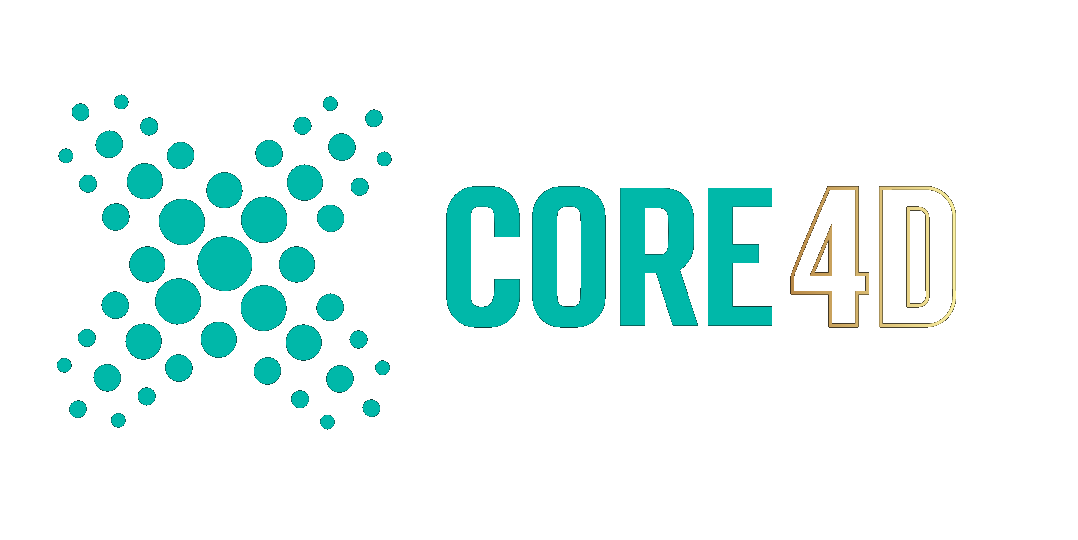All Activity
- Yesterday
-
Taking advantage of forums last days to call community members for assistance regarding very product this community helped so much is, well... This kind of complacency or, shall I rather say disinterest from MAXON is quite telling. Corporate greed and blindness to value it provides is stunning. It is easy to brand yourself as not caring as Autodesk, you are almost all the way there. Once that happens there is no way back to regain trust. No wonder people are leaving for Blender or Houdini...
-
Donovan K MXN started following [Survey] What Assets Do You Need?
-
Hey Y'all, I’m the Group Product Manager for Maxon Capsules. I'm very sorry to hear that this forum will be shutting down. While the community is all still here, I'd like to ask you for your feedback. We’re currently planning our next year of Capsules production (2D & 3D assets and presets available in Cinema 4D, Redshift, and Maxon Studio) - how we can make the library more useful in your day‑to‑day work? Survey link: https://forms.office.com/e/wCL0BfUZiT Time required: 2–10 minutes. You can answer as much or as little as you like; if you need to stop early, just skip to the last page and hit “Submit.” Your feedback will help us prioritize the types of content and features we produce next year. Thanks in advance for sharing your thoughts!
- Last week
-
I think generally this concept of fixing problems yourself is going away a bit. i feel like people who have problems try to reproduce it, and then email that to customer support. and then if its a bug they try go fix it.
-
Thank you Happy Polygon - much appreciated! I will experiment a bit more with the Simulation Substeps, never heard of that one or just forgot about it… I will post an update hopefully before the forum goes. Not sure i will use an afro on my character I just wanted to play with the hair.
-
This system has started to show a lot of problems in the latest versions such as the effect of changes in specific take on the master take, random change of cameras, changing settings such as lighting for example in several takes even in the master after trying to change that in a specific take, freezing and even crashing while trying to add a take ... etc. The weired thing is that there isn't a lot of discussions about this on forums and others platforms, have people recently stopped using the take system on cinema 4d or what?
-
Hi Members Im trying to work out how to get an image in and out of octane looking exactly the same. In regular C4D I would use the compositing tag and at that point the image wouldn’t get affected by lights etc and would keep its original color, so when rendered it looked exactly the same as the original. I cant seem to achieve the same in Octane Any ideas / advice Many thanks Deck
-
Blimey, what sad news, just logged in to get my latest C4D issue solved at the core as I usually do and find its all going away. Dunno what I will do now, the cafe and lately core has held my hand through my entire 3d journey and its not an underestimation to say it was my main source of learning in the early days. I think I watched all of Nigels tutorials as well as many others. Ive had hundreds of problems solved and often with multiple solutions from various super knowledgable and highly skilled members. Its always been my goto spot to stop me pulling my hair out when all my own stumbling efforts have failed. I also learned so much following other peoples issues and downloading and disecting all the different files as well as trying to solve a few myself. Its been a lot like having my own tech support that I could rely on when all else failed, 3D isn’t my primary gig so Im no expert and I hit the wall a lot, I dont really earn much from it but was happy to pay a fiver for the subs, 60 bucks a year aint much in the grand scheme of things. I will take this opportunity to offer a huge thank you to all the members that have helped me out over the years with problems both complex and also very simple. I was always surprised at how super skilled and talented people were happy to take time out from there own projects and work to help with what probably seemed quite simple issues to them, when they could be off building wonderful creations for themselves. Any billionaire C4D users out there to save the day ? Was great while it lasted, thanks everyone.
-
Will it be possible to archive all the forums and files and publish them on places like Internet Archive? I'm willing to help in any way I can.
-
A lot of things could be involved. Increase simulation substeps. Add more intermediate points to guides. Usually afro hair aren't that bouncy...
-
@Jeff H1 I think that does mean that if you create something you can't using Open Source Initiative which is organization. Because they sell you free product just like Blender Market doing. Blender isn't free because of it. It use money from selling other people plugins. So basically from users that use it. Paradox. They think like this - "you can use software for free but most probably you will buy some plugins from Blender Market like simple bevel node which is not included in our node system by default because we know that you will like to use it". Generally most of the great Blender features are paid. I thought the same about Maxon One reserved nodes especially from Rocket Lasso. But I'm very happy that they at least didn't do the same as "open" foundations. Anyway most of the materials are still reserved to Maxon One license. In my opinion it doesn't mean that you can't create scripts for free. Just do that in your own initiative. Nobody can prohibit you for share your own images, scripts created in software for free. You can always sell scripts or nodes using Gumroad for $1 😉
-
New EULA snippet from Maxon. Does this mean people can’t create open source scripts, meshes or materials for c4d. Wtf Maxon : 1.11 User shall not, directly or indirectly, and User shall not permit any third party to, cause any Software to become subject to any license that is considered an open source software license by the Open Source Initiative or a free software license by the Free Software Foundation, or any license substantially similar to any of the foregoing.
-
I am so sad to read this. Thank you to Igor, Hrvoje, Nigel and everyone else who was involved over the years in this forum 😟 I had been a silent reader for years and gained so much knowledge from this forum (especially from many posts from @Cerbera). I hope there is a way to preserve the forum as an archive, as others have already expressed as their wish too. However, I fully understand the cost factor and that you need to pull the plug at some point. I joined @HappyPolygon's Discord server (thanks for setting this up), but I also much prefer traditional forums when it comes to proper discussions and learning material. Slack, Discord, Teams... they're all geared towards real-time collaboration and discussion, but are no replacements for traditional forums. Call me old-fashioned, but I dislike how the internet has evolved in the communcation aspect. I guess I still have time this month to go through the forums and save out some valuable knowledge. So sad.
-
GazzaMataz started following Hairy Breakdance
-
Well seeing as the forum will be going in just over two weeks I thought I would post once more! I am working on some of the scenes and characters from my old 'Bella Bear' project and I was recreating the cake shop. So I dropped Minkey Boy in doing a breakdance with some nice blue hair as a test. Now if you watch the flick you will see that the hair intersects the face of the character even though I created a collider on the face geometry. I don't understand why this doesn't work? Minkey Cake Shop Breakdance HB v01.mp4
-
Thanks. I figured these guys have been around for a long time.. so probably not going anywhere.. and its free, so it wont die, and people can find it slowly.. maybe i should make a post "what happened to core4d c4dcafe" so it shows in google.
-
Jeez, Derek Kirk of the Effectatron Youtube channel ends his 'What's new in C4D 2026!' video by unsubscribing.
-
I'll rejoin Reddit and will post about your forum and the Discord before this one goes Aleksey so at least can't stay they don't know about it.
-
Ah very sad times indeed.. Im incredibly greatful to this place. The c4dcafe was a place i spent so much time in.. it's a shame that so much knowledge will evaporate.. but as many have said, hardly surprising. everyone wants instant chat answers.. discords, slacks etc.. Managing communities has only become more and more difficult i think in recent years, with bots, lazy people, people posting answers from ai.. spam.. etc.. It is very sad to see what the internet has become.. it had so much potential.. Well much love to you all, and thanks to everyone who tried to keep this place going. It was a Sisyphusian task. --- I did a quick search for forum hosting options and found this place.. my god the retro vibes just got to me.. Maybe it can be a place the c4d cafe / corec4d refugees.. the last c4d forum 😄 https://retroc4d.freeforums.net/ maybe it's a bit too pink.. ---
-
You and me both. It feels like everyone that grew up with forums understands how BAD Discord is as a "replacement". It's a great community tool, but that's it. It has one really big benefit though: it's free. Although the limitations around the free accounts have tightened up in the last years, it's still really good. And for the server "owners" (nobody really owns those serves but Discord themselves) it's completely free to host and about two clicks away.
-
Hi jacobite, here's a screen recording example. I forgot to include a step to help complete the selection, which is to double-click the tag once the formula is input. https://www.dropbox.com/scl/fi/6jhbyybtfw6x196rp205t/Screen-Recording-2025-09-11-at-8.49.10-AM.mov?rlkey=a51qqif54syyq9lespvzl6ex8&st=2ugcbret&dl=0
-
Cheers geoblob, I tried your solution but can't get it to work. This project is a ship called PS Waverley (The last Ocean going paddle ship in the world). I initially did the hull as one object, however, after a while realised I should have started the project with Symmetry in mind because of the amount of detail with Windows and stuff. Would it be possible for me to send you the project so that you can do your formula to cut it in half? I usually use R18 and are still trying to get my head around R26. Could you leave the tag on so that I can learn something new. Thanks you very much Jacobite Waverley Symmetry.c4d
-
I'm really sorry to hear this. I was member 30, I think, to join what was then C4D cafe back in the day. Although I've visited the site less often in recent years, I have to give a big thank you to everyone that ran the site & contributed to the discussions here, it was a real trove of knowledge. I must confess to being a bit mind-boggled that discord seems to be replacing forum, when it does such a completely different job & is so bad at holding long-term, organised knowledge like forums are. My best wishes to all the team in future, thanks for your efforts.
-
They could have rolled the new logo out in May / June, and kept some of the chunkier C4D updates from then till now, and avoided the numerous threads of people going, WTF Maxon? People have looked forward to the big annual update for years, and releasing one that seems thinner than what R17 was a decade ago is pretty goofy.
- Earlier
-
C4D R26 I have a dense model and I want to select all points on "Z Axis" grater than position zero. Anyone got a solution? Cheers Jacobite







.thumb.jpg.76e5053024f12370a5459fec0846aa38.jpg)